
Key takeaways
While the broader economy is showing signs of slowing—particularly with a modest rise in unemployment—the property markets continue to gain momentum through spring.
Buyer confidence remains strong despite mixed economic signals.
Unemployment edged up to 4.5%, but this reflects an expanding workforce rather than job losses.
The participation rate at 67% shows more Australians are looking for work, and employment itself is still growing modestly.
Construction cost growth has cooled to around 3% annually, a big drop from over 20% two years ago.
Supply chains have normalised and demand for materials has eased, yet overall costs are still about 50% higher than pre-pandemic levels, keeping affordability tight.
Spring auctions are in full swing, with clearance rates averaging 68.1%, well above last year’s levels.
Even as listings surge and buyers have more choice, demand remains robust—setting the stage for a record-breaking “Super Saturday” ahead.
As Australia’s housing markets charge through spring, we’re seeing a fascinating contrast emerge – while the broader economy shows early signs of easing, the property markets are powering ahead.
The most recent Australia Bureau of Statistics data shows that unemployment ticked higher to 4.5% which is a new cycle high, and employment growth slipped to a below-average pace of 1.5%yr amid an underlying slowdown in ‘care economy’ jobs growth.
So what does all this mean for our property markets as we head into the final stretch of 2025?
That’s what Dr. Andrew Wilson and I discuss in this Week’s Property Insiders chat as we uncover what’s really going on in Australia’s property markets.
The labour market is softening – but only slightly
Watch this week's "Property Insider" video as Dr. Andrew Wilson explains how Australia’s jobless rate rose modestly to 4.5% in September, up from 4.3% the month before.
That might sound concerning at first, but he points out it’s more a reflection of a growing workforce than an actual rise in job losses.
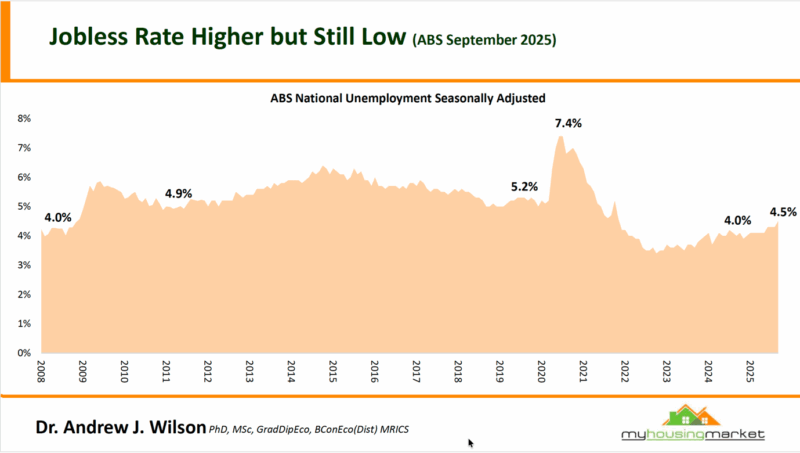
Participation is near record highs at 67%, which means more Australians are looking for work, and we’re not really seeing a collapse in employment – it’s a gentle easing.
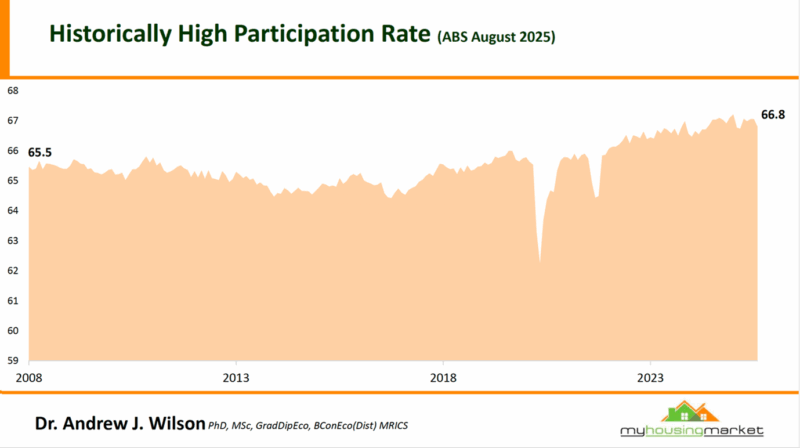
Sean Crick, ABS head of labour statistics, said: ‘This is the highest seasonally adjusted unemployment rate recorded since November 2021.
‘There were 34,000 more unemployed people in September. The number of employed people also grew, up 15,000 in the same period.
‘As a result of these increases, the participation rate rose by 0.1 percentage points to 67.0 per cent, although this is below the record high of 67.2 per cent we saw at the beginning of the year,’ Mr Crick said.
Queensland continues to boast the nation’s lowest unemployment rate at 4.2%, while other states remain comfortably below long-term averages.
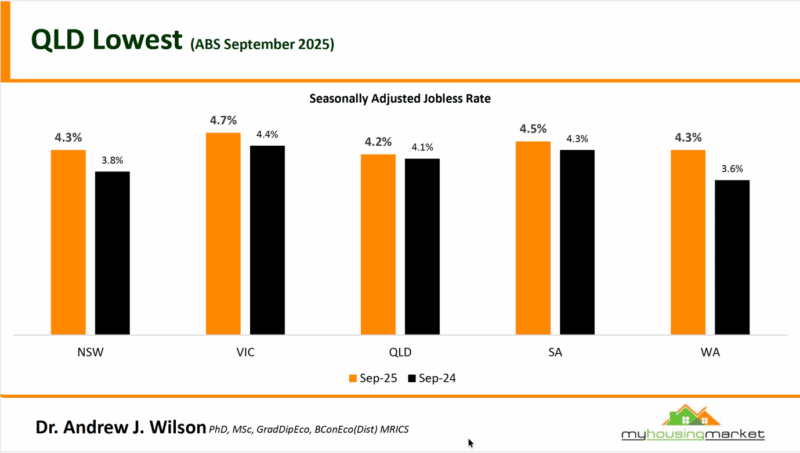
Dr. Wilson believes that lower interest rates will continue to support a still strong labour market.
Building cost pressures are easing
Watch this week's "Property Insider" video as Dr. Andrew Wilson discusses the slowdown in house-building cost growth.
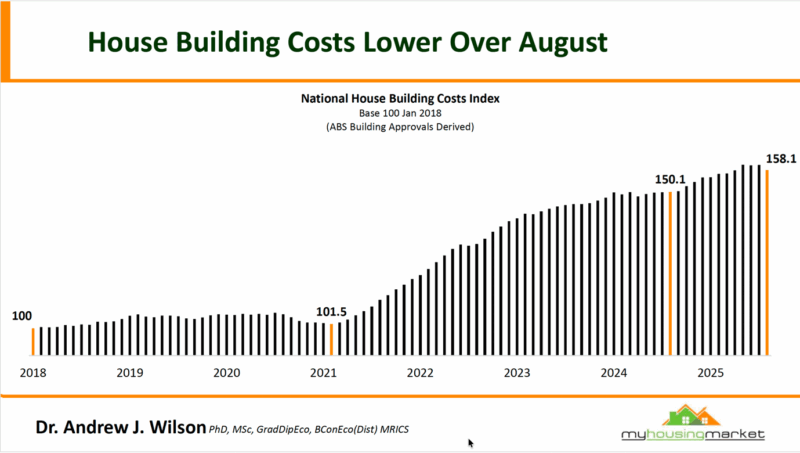
Supply chains have normalised, and we’ve seen a pullback in new dwelling approvals. That’s reduced demand for materials and labour.
The annual growth rate of building costs has dropped to just over 3%, down from more than 20% two years ago.
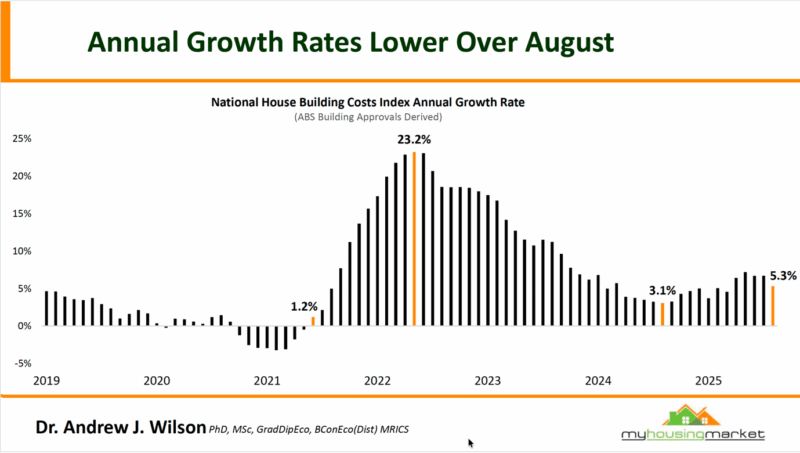
While that’s a relief for developers and builders, it doesn’t mean new homes are suddenly affordable.
Costs may have stabilised, but they’re not falling back to pre-pandemic levels. In fact building costs are around 50% higher than they were 4 years ago.
Auction markets – spring in full swing
Auction numbers surged over the past week, but clearance rates remained generally strong despite more choices for buyers and more competition for sellers.
The national weekend auction market reported an average clearance rate of 68.1% over the past week, up from 67.3% the previous week and well ahead of 61.0% for the same week last year.
Auction markets will face their biggest test of the year next week as the final spring Super Saturday of Auctions arrives, with likely record levels of listings on offer to buyers.
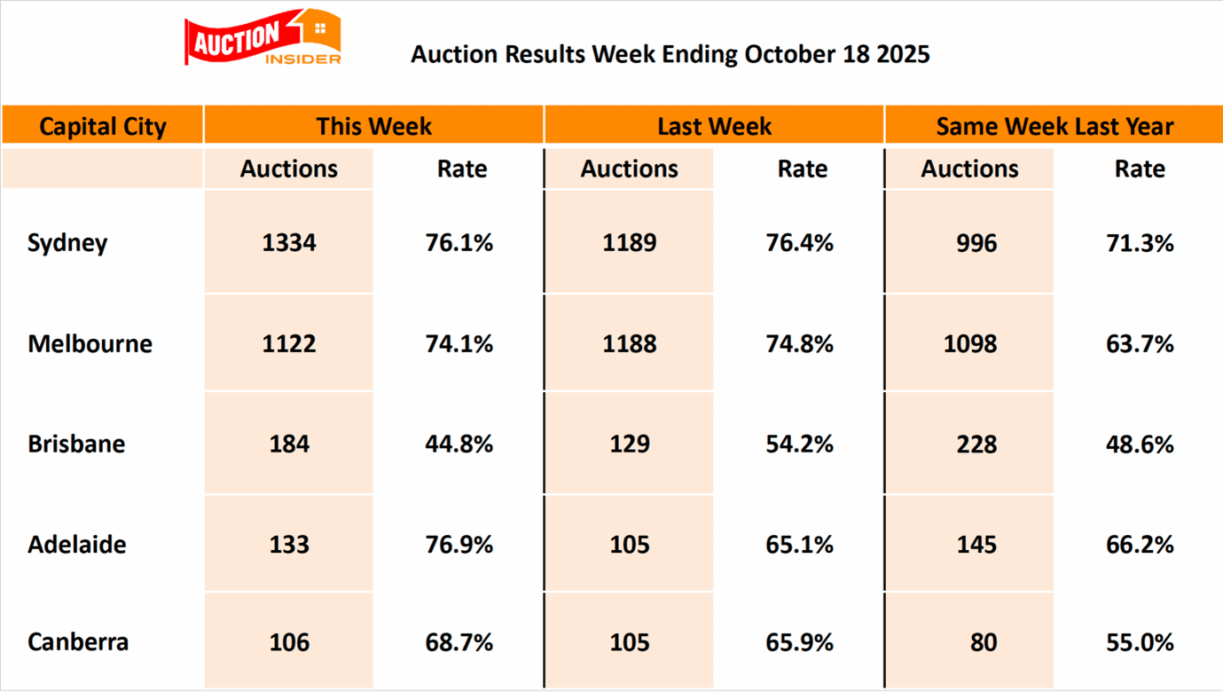
Conclusion
While the broader economy is showing signs of slowing, Australia’s housing markets continue to defy expectations.
Dr. Andrew Wilson’s latest data confirms that despite higher listings, elevated interest rates, and ongoing affordability challenges, buyers remain active and confidence is quietly returning.
This isn’t the boom of a few years ago – it’s a more mature, sustainable phase of the cycle, underpinned by strong population growth, chronic undersupply, and improving consumer sentiment as the likelihood of further rate hikes fades.
In other words, our property markets are proving remarkably resilient.
As we head into the final months of 2025, smart investors who stay focused on the fundamentals of location, quality, and a long-term strategy will be well placed to take advantage of the opportunities ahead in 2026 and beyond.
Because as history shows, Australia’s housing markets rarely move in a straight line - but over time, they always reward those who buy well and hold on.














